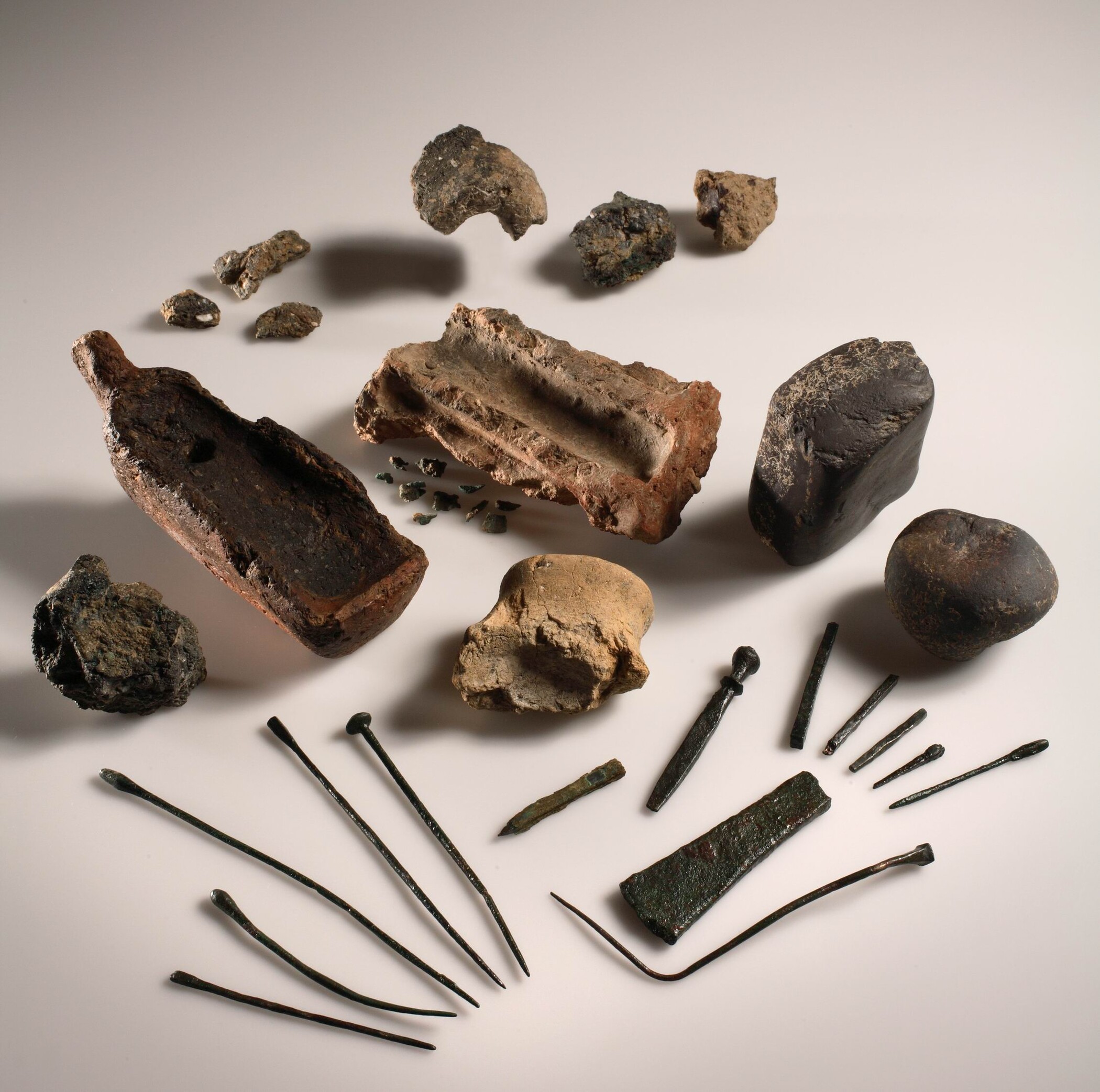Interactions of Prehistoric Pyrotechnics in Crafts and Trades: Sources of Raw Materials, Technological Choices and Influences on ÇUKURİÇİ HÖYÜK
The project focuses on the study of interaction in pyrotechnic crafts at Çukuriçi Höyük in western Anatolia, a hitherto singular and extensive metallurgical center of the early 3rd millennium BC. Through the analysis of objects that can be associated with metal workshops and pottery production, a possible exchange between the craftsmen of both branches will be revealed.

The project further aims to analyse newly identified raw material sources in the areas surrounding Çukuriçi Höyük in more detail, and compare them with existing geological data. Geological fieldwork combined with laboratory analyses enable the identification of deposits of clays and ores and thereby allow the reconstruction of the internal and external organization of an important prehistoric production centre. Questions about regional exchange relations of the prehistoric population and transfer of technology between crafts can be clarified by these methods.
In the course of this project, chemical and petrographic data of all specialists involved will be evaluated in an interdisciplinary way. The focus of the research project is craftspeople whose technological skills have been influenced by their qualifications and the resources available in the landscape. Unifying processes of metal and pottery workshops are the knowledge of appropriate sources of raw materials, their procurement, subsequent processing and production, and the exchange of these materials. Effects of both crafts on social, economic and cultural-historical phenomena are to be explained. The expected results of the project can be integrated into ongoing studies of the Research Group »Prehistoric Anatolia« from both a scientific and practical point of view.
The project focuses on the study of the interaction between pyrotechnic crafts in a specific prehistoric settlement. A hitherto singular and extensive metallurgical centre of the early 3rd millennium BC (Early Bronze Age 1) was found on the settlement hill of Çukuriçi Höyük in western Anatolia, at which a large number of ceramic artefacts were found in the working and residential areas. Through a comprehensive and comparative analysis of objects that can be associated with metal workshops and pottery production, knowledge exchange between craftspeople of both specialisations will be traced. Furthermore, a hitherto neglected prehistoric cultural landscape will be investigated with archaeometric studies for the first time.
The project focuses on the study of the interaction between pyrotechnic crafts in a specific prehistoric settlement. A hitherto singular and extensive metallurgical centre of the early 3rd millennium BC (Early Bronze Age 1) was found on the settlement hill of Çukuriçi Höyük in western Anatolia, at which a large number of ceramic artefacts were found in the working and residential areas. Through a comprehensive and comparative analysis of objects that can be associated with metal workshops and pottery production, knowledge exchange between craftspeople of both specialisations will be traced. Furthermore, a hitherto neglected prehistoric cultural landscape will be investigated with archaeometric studies for the first time.
